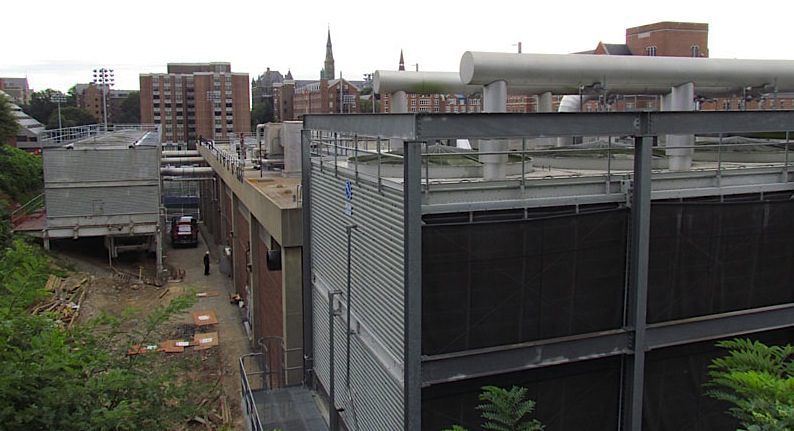G.U. Discusses Utility Upgrade in Time for Earth Day
By • April 16, 2018 0 682

In 2014, Georgetown University did what few other institutions and countries throughout the world were able to accomplish: It reached its goal to reduce its carbon footprint by at least 50 percent by the year 2020 — six years ahead of time. Now, the university is moving ahead on other projects to meet campus goals to reduce greenhouse gas emissions.
On Tuesday, April 17, the university will brief its neighbors on the project to modernize and upgrade the campus utility plant. The centralized facility supplies the main and (now greatly expanding) medical campuses with heating and cooling systems that control temperatures in all campus buildings.
The briefing — 6:30 p.m. to 8 p.m. — at St. Johns Episcopal Church’s Blake Hall at 3240 O St. NW. intends to answer community questions, before any regulatory filings are made, according to Robin Morey, Vice president for Planning and Facilities Management, and Christopher Murphy, Vice President for Government Relations and Community Engagement. The plan will then be reviewed by the Old Georgetown Board in the next few months.
As of fiscal 2017, projects like the installation of a new efficient chiller, variable frequency drives for water pumps, utility plant LED lighting retrofits and insulation of chilled water pipes are saving energy at the central plant. A 2014 boiler fan upgrade, steam trap repairs and a de-aerator project also cut an estimated annual 2,508 metric tons of carbon dioxide or its equivalent — equal to taking about 528 cars off the road each year, according to university officials.
The university embraced the challenge to cut campus energy demand and to use energy more efficiently even before the Paris climate accords were signed by more than 145 countries in 2016. Since fiscal 2014, Georgetown has invested in a set of efficiency measures that are saving at least 3.3 million kWh of electricity and 82,000 MMB of natural gas each year — cutting 5,500 metric tons of CO2 or the equivalent of planting more than 140,000 new trees.
The university was able to meet its energy saving goals ahead of time through the use of green e-certified renewable energy certificates. Ongoing and new projects include developing:
• LED-retrofits for lighting in all buildings;
• Retrofit of the Alumni Square residence hall replacing all of the gas furnaces and air conditioners with more efficient models, and replacing the water heaters in each individual unit with shared, tankless water heaters;
• a multi-building steam trap replacement project;
• a lighting retrofit in the Southwest Garage;
• building energy audits;
• building automation systems; and
• a demand response program during hot summer months when energy use peaks.
Student and community engagement projects include the campus “Switch It Off Challenge,” a student competition to save energy between residence halls, and the “G.U. Campus Energy Conservation Program,” a voluntary curtailment program to engage faculty and staff, help involve the campus community in reducing energy demand and cutting carbon.
Georgetown campus and community official and student organizations are encouraged to work with various District and community groups in active partnerships and collaborations. Most active partners include the D.C. Sustainable Energy Utility in support of climate and sustainability commitments, and the Georgetown-Burleith Advisory Neighborhood Commission, two of whose commissioners are Georgetown University students.
An updated and ongoing action plan to meet Georgetown University’s climate and sustainability commitments is available at 2017 Master Planning initiative.

